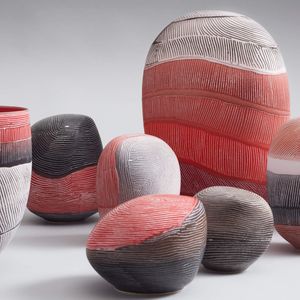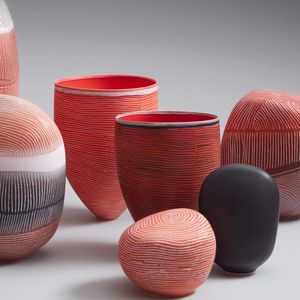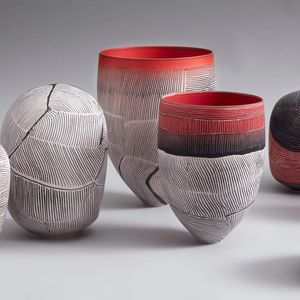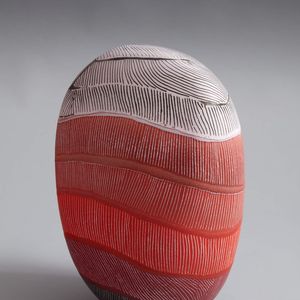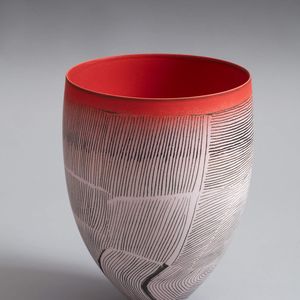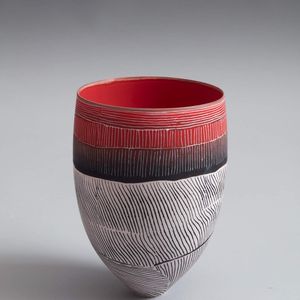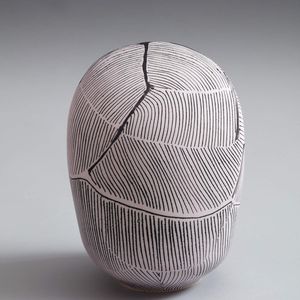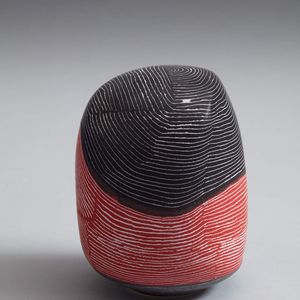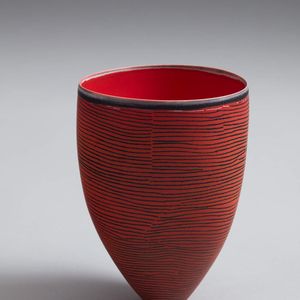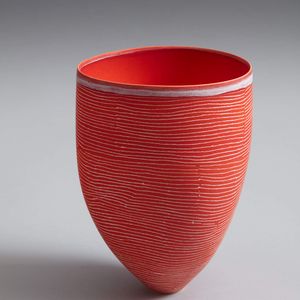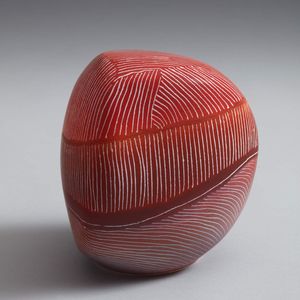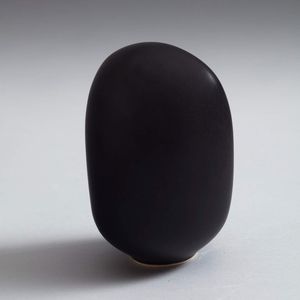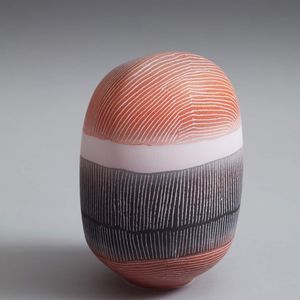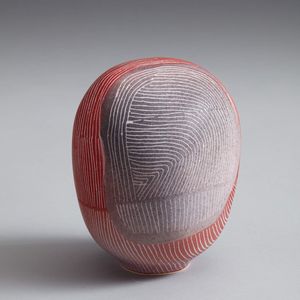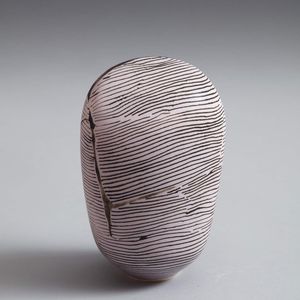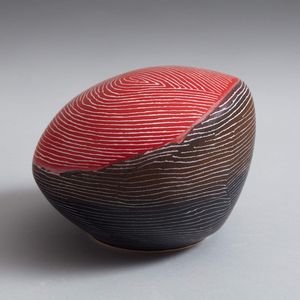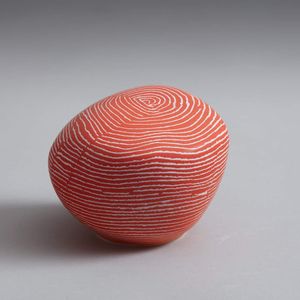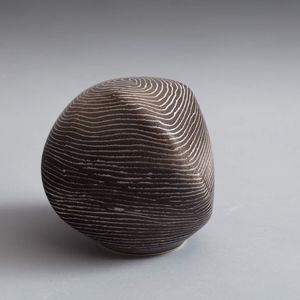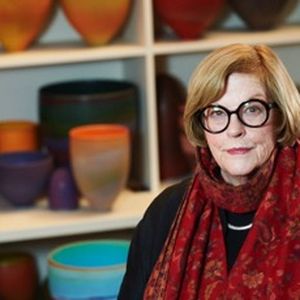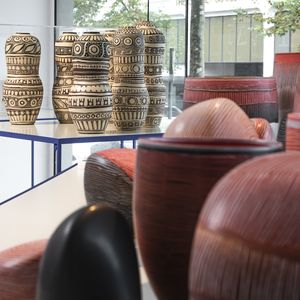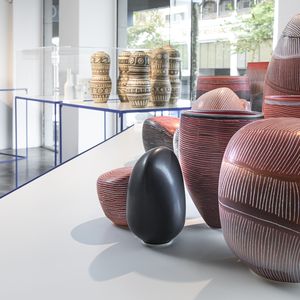Pippin Drysdale
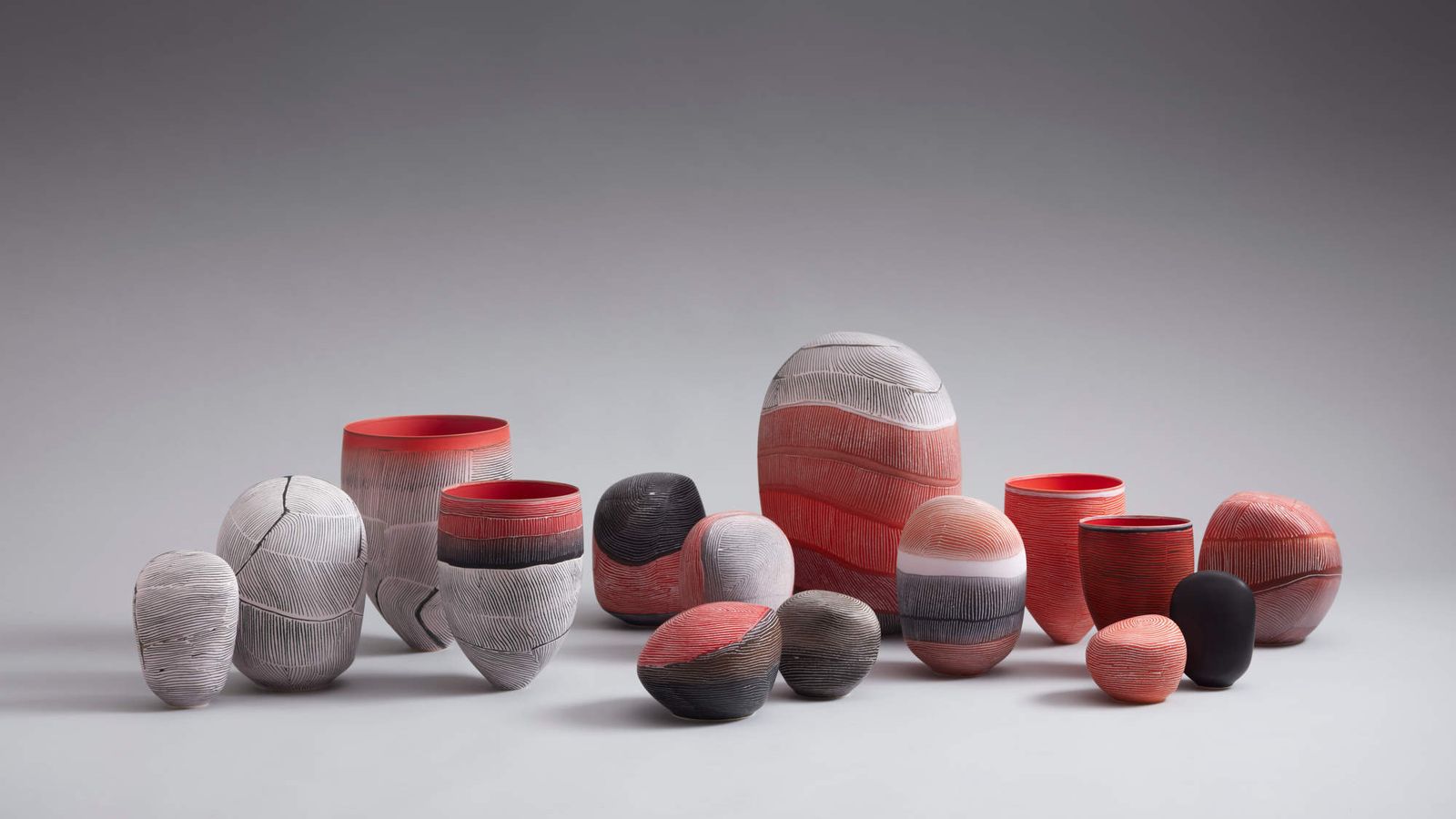
About the artist
An acclaimed International Artist and Master of Australian Craft, Pippin Drysdale's career as a ceramic artist spans more than 45 years. Her passion for the craft merges with a love of the landscape, which has travelled across continents and in most recent years has focussed on the vivid desert landscapes of Australia. Her works evoke a timeless and breathtaking sense of space and place within finely crafted porcelain vessels, narrating the mesmerising vastness of colour experienced in the unique Australian landscape.
Working from her studio in Fremantle, surrounded by the catalogue of her trials and experiments – racks of wonderful pots of all colours and sizes that failed her almost impossible test of quality – Pippin Drysdale continues to interrogate her practice from the perspective of an artist without borders. The Falstaffian spirit that imbues her every action is pitched always at maximum intensity, from her explosive laugh - that fills not only rooms but auditoria - to her extravagant generosity and, of course, to her total commitment to her work.
The process of analysis, review and revision continues until she is convinced she has captured the character of each new series of work. The landscape is the ever-constant lure, the catalyst for work, the connecting point and anchor for each new development. Her works is ambitious. It negotiates interweaving journeys through various landscapes describing her artistic practice and her engagement with the sites she documents. Through a continuing investigation of the flora and landforms of these unique areas of Australia and a commitment to engaging with the cultural, social and political agendas that are shaping them, she is open to embrace each new creative challenge.
Artist statement
Exhibition work: Granite Warriors Winborn Rocks Central Desert, 2021, porcelain incised with coloured glazes
Pippin Drysdale has been a member of The Australian Ceramics Association since commencing her career in the 1970s and has been active as a member of the ceramics community – exhibiting, holding workshops, undertaking residencies both nationally and internationally. Her works have been collected by galleries, museums, curators and private collectors worldwide.
Based in Fremantle, Western Australia, Pippin’s career spans over 50 years, over half of which has been a hugely successful collaboration with Warwick Palmateer who throws the vessels that Pippin decorates in her iconic style. There are a wide range of articles, videos and mongraphs referencing and reviewing their work, including three significant articles in The Journal of Australian Ceramics.
Pippin has travelled extensively throughout both Australia and overseas, each foray a stimulus for identifying new ideas but her heart remains firmly in the Western Australian landscape, the spirit of her creative energy. She has always worked thematically, each series utilising the essence of a chosen landscape to explore its landforms, flora and fauna through different times of day and differing seasons. The changing colours of light remain a constant underlying theme, with each place theme evolving its own unique vessel structure, colour pallete and surface treatment.
“Landscape is my passion and ceramics, for me, represents the most honest way of honouring that landscape, utilising materials that are themselves part of the earth” (Drysdale, August 2016).
Realising a given series is a careful process involving testing and repeated trial and error, usually over many months before quality works can be created. The process commences with the refinement of the required structural forms – the integrity of the clay body – its suitability, drying and firing performance and the technical challenges presented by the structural forms themselves. Any new colour palette presents additional challenges to ensure integrity without compromising the wonderful layering and chemical reactions conceived. The surface treatment also must be subjected to further testing and refinement, adjusting firing times and temperatures until the required quality balance can be obtained. Once all this has been achieved, analysed and documented then, and only then, can a new series be created.
The 2021 installation entitled The Granite Warriors typifies such a thematic approach. Granite rocks are the most wide-spread and abundant rocks on earth and may appear as rocky outcrops standing like “islands” in the landscape. Such structures are common in the southern and central parts of Western Australia e.g. the well-known Castle Rocks in the Porongurups but occur less frequently in the north. A particular granite landform called ‘castle koppies’, created by pronounced weathering of vertical fractures in the rocks, forms blocks and boulders standing tall and it is these, such as found at Winborn Rocks in the Central Ranges, that stand as islands of warriors, battling the forces of time.
Image: Pippin Drysdale, Granite Warriors Winborn Rocks Central Desert, 2021. Photo: Robert Frith – Acorn Photo.


